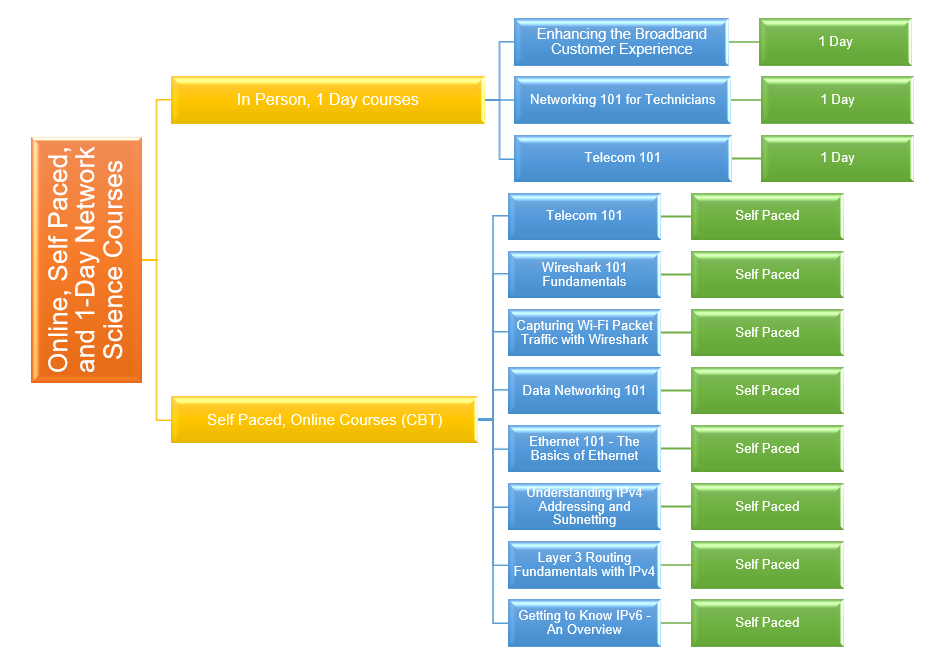Welcome to the Online, Self Paced, and 1-Day Network Science Courses area!
The courses shown below are in person courses, or they are self paced, online courses.
For the online courses, all you need is an Internet connection and a browser, and a *free* account here!
To create your account - click on Login (top right), then Create a New User. It takes less than a minute.
What this means is these courses combine on demand video learning with hands on lab exercises of various types.
From quizzes, that test your learning and reinforce key learning points, to experiments, you can run either on your computer or within the GNS3 or mininet environments, practicing what you are learning is what we have always believed in.
[You can learn more about GNS3 and mininet in our Reference Library.]

A couple of key points:
Some of the classes are free. These classes require you to have a *free* user account here.
![]()
You will see this symbol for these courses.
Some of the classes are not free. These classes require you to have a *free* user account here.
Once you have an account, there are two enrollment options:
![]()
You can pay for the course securely using Paypal. You do not need a Paypal account! You can simply pay with a credit card at Paypal. Or, if you have a Paypal account, you can pay with your account. If a course uses this enrollment method you will see the Paypal symbol.
![]() If your company or organization has provided you with an enrollment key, you can use the enrollment key to enroll in that course. If a course uses this enrollment method, you will see the key symbol.
If your company or organization has provided you with an enrollment key, you can use the enrollment key to enroll in that course. If a course uses this enrollment method, you will see the key symbol.